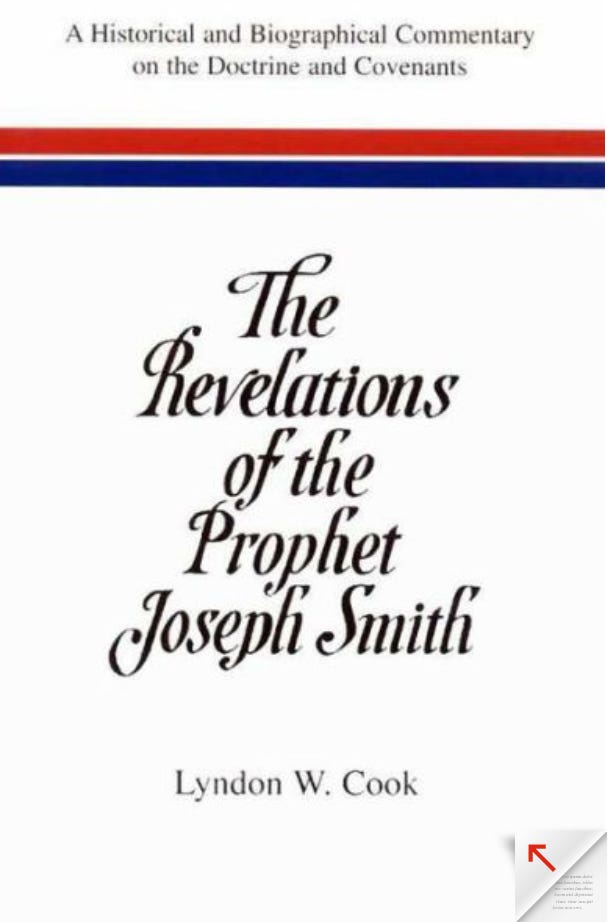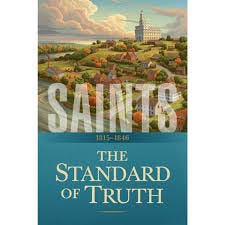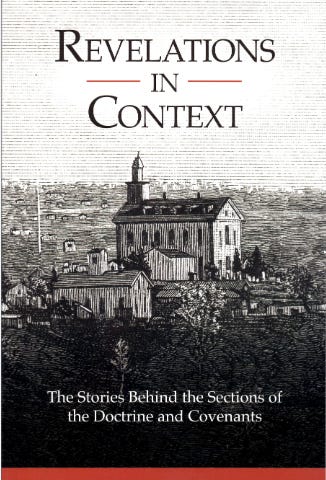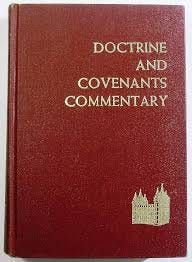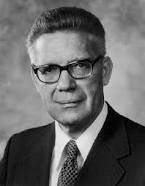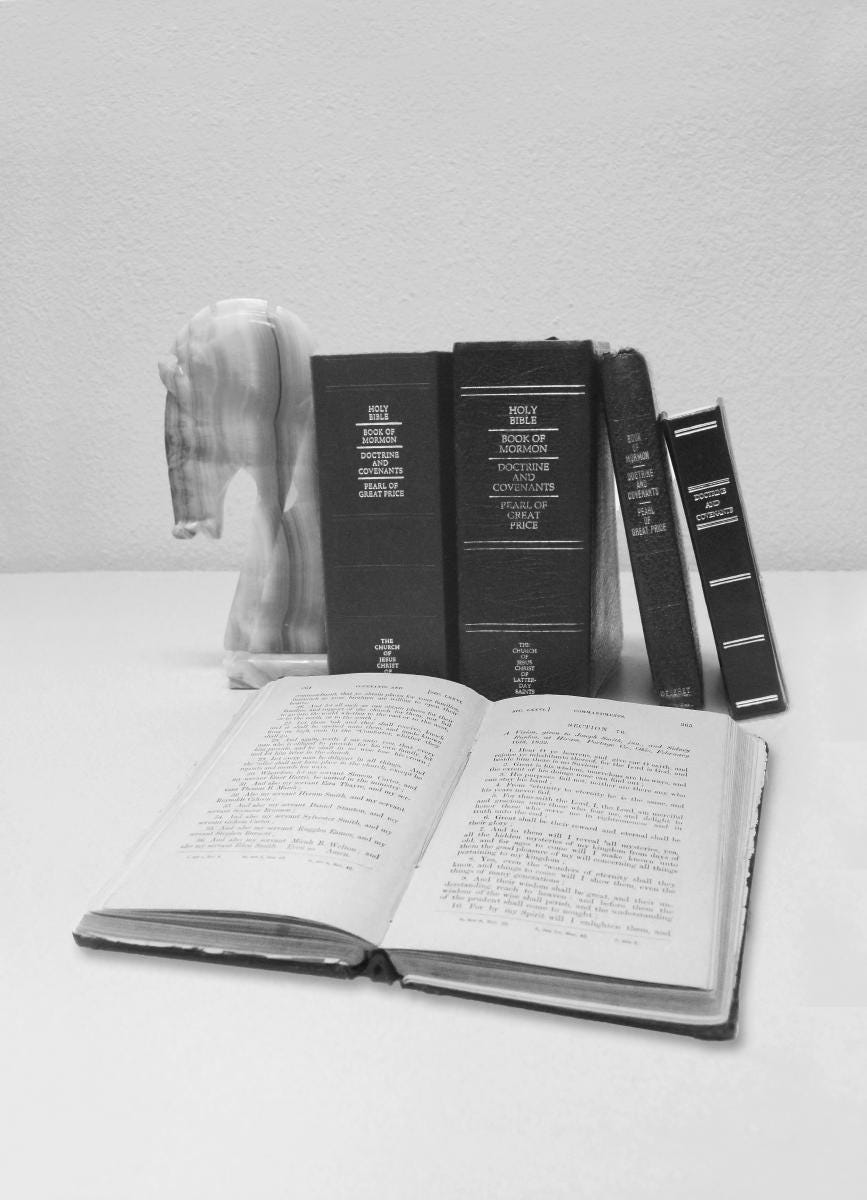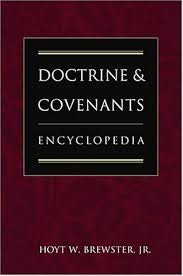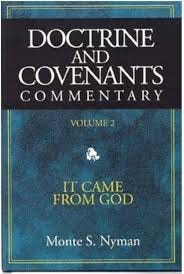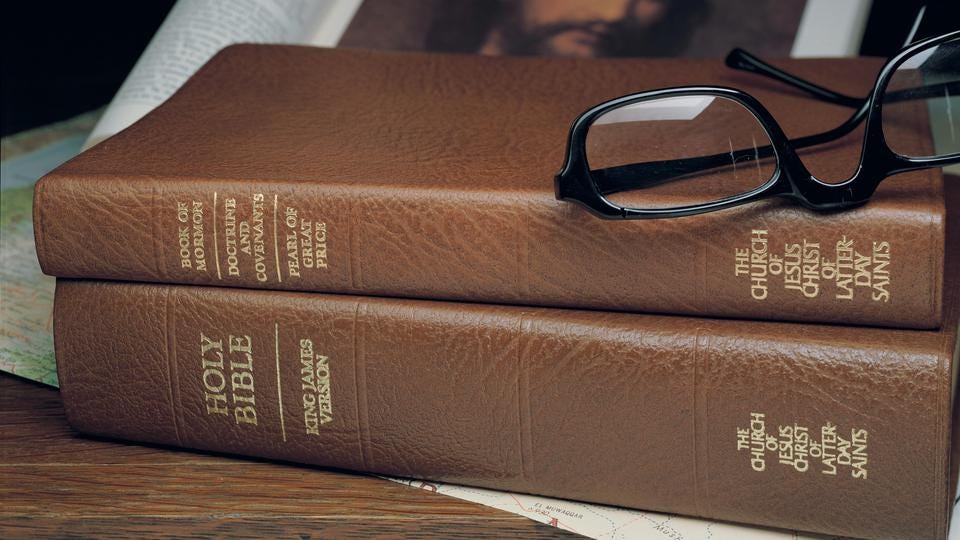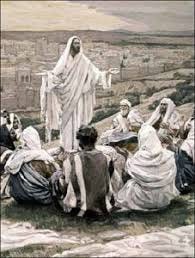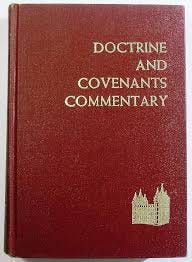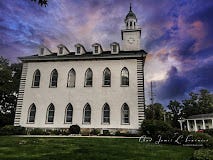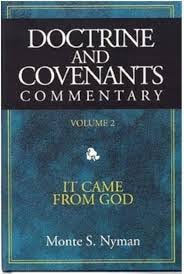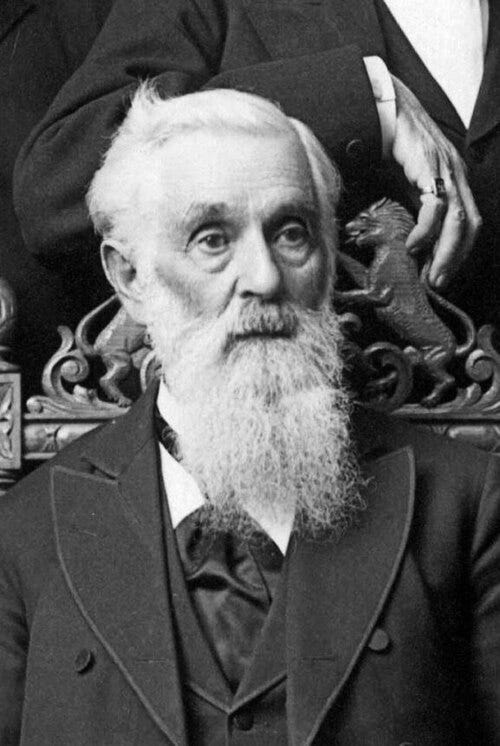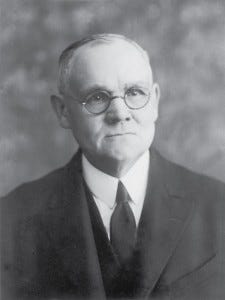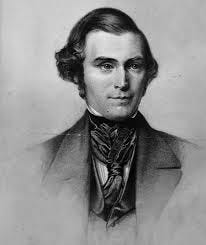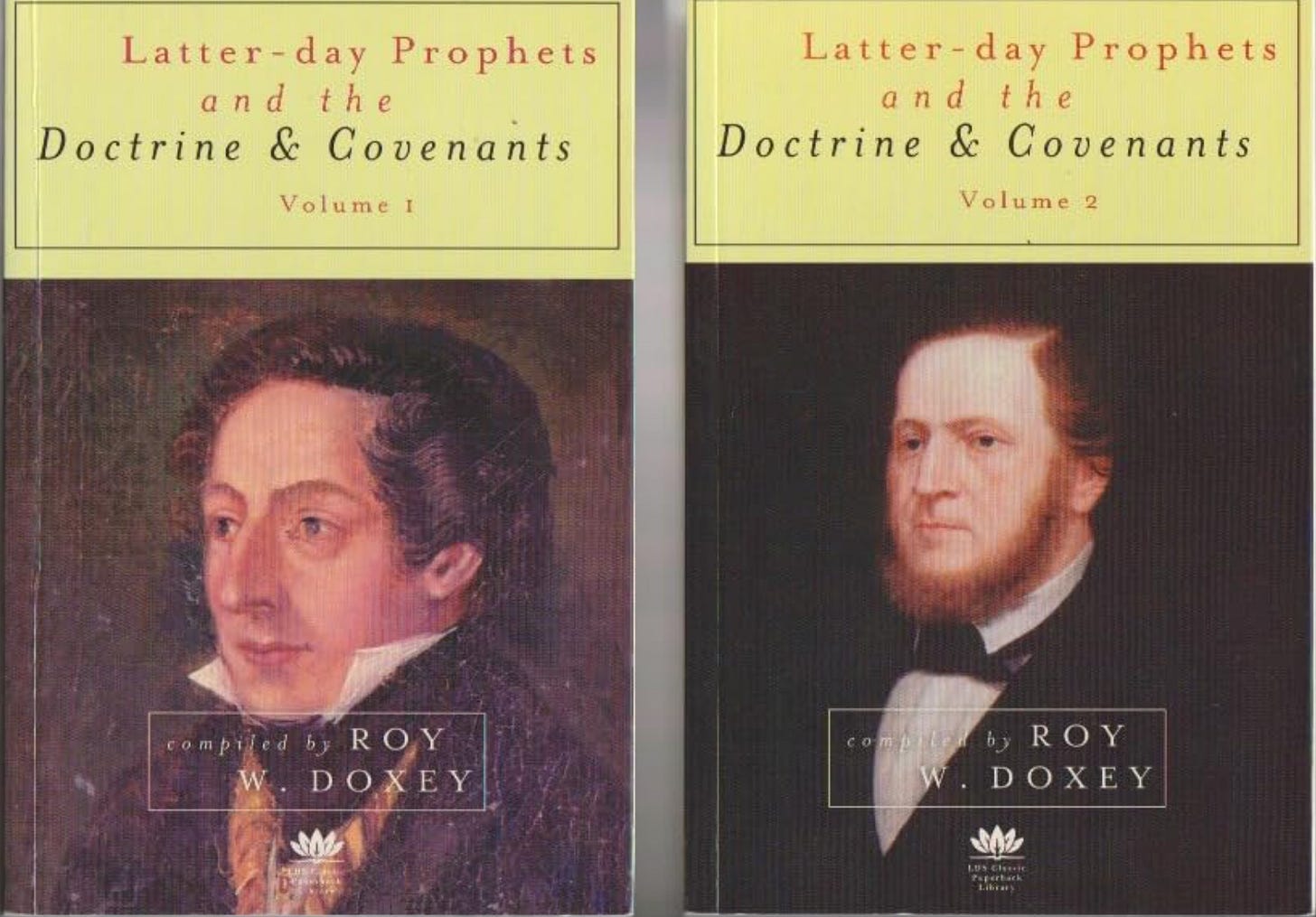That I May Bring to Pass My Strange Act
Historical Background and Reflections on Doctrine and Covenants Section 95
What is the historical background for Doctrine and Covenants Section 95?
The historical background for this section is closely related to that of the previous section. In his book The Revelations of the Prophet Joseph Smith, Lyndon W. Cook sheds more light on this topic:
Date. 1 June 1833 (3 June ?).
Place. Kirtland, Geauga County, Ohio.
Historical Note. On 4 May 1833 a conference of high priests met in Kirtland, Ohio, to take into consideration the commandment in section 88 to building a house for the School of the Prophets. Hyrum Smith, Jared Carter, and Reynolds Cahoon were appointed by the conference as a committee to obtain subscriptions for the above-named purpose.
On 1 June 1833 this committee issued a circular in which they urged the Saints to fulfill the commandment of the Lord to build a house wherein they could call a solemn assembly and “treasure up words of wisdom.”
Two days later, 3 June 1833, during another conference of high priests in Kirtland, it was decided that the dimensions of the sacred edifice should be specified. Thereupon the Prophet
“received a revelation on the size of the house the word of the Lord was that it shall be fifty five feet wide and sixty five feet long in the inner court and the conference appointed Bro Joseph Jr. Sidney Rigdon and Frederick G. Williams to obtain a draft of construction of the inner court of the house.”
Verse 14 of the revelation directed that the building be erected “after the manner which I shall show unto three of you.”
Accordingly Joseph Smith, Sidney Rigdon, and Frederick G. Williams, members of the First Presidency, were privileged to see the house in vision prior to its construction. Concerning the vision, Frederick G. Williams stated,
“Joseph received the word of the Lord for him to take his two counsellors Williams and Rigdon and come before the Lord, and he would show them the plan or model of the House to be built. We went upon our knees, called on the Lord, and the Building appeared within viewing distance: I being the first to discover it. Then all of us viewed it together. After we had taken a good look at the exterior, the building seemed to come right over us, and the Makeup of this Hall seems to coincide with what I there say to a minutia.”
Publication Note. Section 95 was first published as section 95 in the 1835 edition of the Doctrine and Covenants. (pp. 197-198)
In his book A Joseph Smith Chronology, J. Christopher Conkling shares a few more historical details in the following timeline:
May 25, 1833
Joseph’s uncle John Smith and cousin George A. Smith from Potsdam, N. Y., arrive in Kirtland. They are the only relatives of the family of Joseph Smith, Sr., who have thus far received the gospel, outside of Joseph’s immediate family.
June 1, 1833
There is great excitement in Kirtland as the Saints anticipate the commencement of the building of the house of the Lord. Although the Church is very poor, a letter is sent throughout the Church asking for subscriptions for the house. Joseph receives D&C 95. (p. 41)
The authors of the first volume of Saints describe the historical context for this section as follows:
The first session of the School of the Prophets closed in March, and its members dispersed to serve missions or fill other assignments. Church leaders in Kirtland, meanwhile, worked to buy a brickyard and raise funds to build the temple.
Around this time, Joseph received a letter from Missouri. After reading the “olive leaf” revelation, Edward and others had urged the Saints to repent and reconcile with the church in Kirtland. Their efforts worked, and they now asked Joseph to forgive them.
Ready to put the conflict behind him, Joseph sought ways to fulfill the Lord’s commandments for Zion. In June, he prayed with Sidney Rigdon and Frederick Williams to learn how to build a temple. As they prayed, they saw a vision of the temple and examined its exterior, observing the structure of its windows, roof, and steeple. The temple then seemed to move over the top of them, and they found themselves inside it, inspecting its interior halls.
After their vision, the men drew up plans for temples in Kirtland and Independence. Outside, the buildings would look like large churches, but inside they would have two spacious assembly rooms, one on the upper floor and one on the lower, where the Saints could meet and learn.
Joseph next focused on helping the Saints in Zion make a city of their settlement, which had more than doubled in size since his last visit. With the help of Frederick and Sidney, he drew up plans for a one-square-mile city. Long, straight streets in a grid pattern crisscrossed the map, with brick and stone houses set on deep lots with groves of trees in the front and garden space in back.
Land was to be divided into lots of a half acre each, for rich and poor alike. Farmers would live in the city and work in fields on the outskirts of town. At the center of the city were the temple and other sacred buildings intended for worship, education, administration, and caring for the poor. Each public building was to be inscribed with the words “Holiness to the Lord.”
The city could accommodate fifteen thousand people, which would make it far smaller than New York City, but still one of the largest cities in the country. Once the city was full, the plan could be replicated over and over, until all the Saints had an inheritance in Zion. “Lay off another in the same way,” Joseph directed, “and so fill up the world in these last days.”
In June 1833, Joseph, Sidney, and Frederick sent the plan for the city from Kirtland to Independence, along with detailed instructions for how to build the temple.
“We have commenced building the House of the Lord in this place, and it goes on rapidly,” they reported in a letter that accompanied the plans. “Day and night, we pray for the salvation of Zion.”
The authors of the LDS Come Follow Me manual introduce this section as follows:
Anciently, the Lord commanded Moses to build a tabernacle “according to the pattern shewed to [him] in the mount” (Hebrews 8:5; see also Exodus 25:8–9). The tabernacle was to be the center of Israel’s wilderness camp (see Numbers 2:1–2).
In 1833, the Lord commanded Joseph Smith to build temples “not after the manner of the world” but rather “after the manner which I shall show” (Doctrine and Covenants 95:13–14; see also 97:10). Like the tabernacle in the wilderness, the temple was meant to be a central feature in Kirtland (see Doctrine and Covenants 94:1).
Today, temples are found around the world. Even if they aren’t at the center of our cities, they point us to Christ, who should be the center of our lives. Though each temple differs in appearance, within them we learn the same divine pattern—a heavenly plan to bring us back into the presence of God. Sacred ordinances and covenants connect us to Christ and strengthen our families “not after the manner of the world” but after the pattern God shows us.
See Saints, 1:169–70; “A House for Our God,” in Revelations in Context, 165–73.
In Revelations in Context, note the following two paragraphs in connection with this section:
Within weeks of the olive leaf revelation, the School of the Prophets was well under way, with as many as 25 men meeting in a small room above the Newel K. Whitney Store (see Nathan Waite, “A School and an Endowment: D&C 88, 90, 95, 109, 110,” on page 174 of this book). The school adjourned for the season by April 1833, and Joseph and the brethren turned their attention to the practical aspects of fulfilling the revelation. Land purchases were soon finalized, and men were appointed to oversee the various industries on those properties.5 On May 4, a conference of high priests met to consider “the necessity of building a school house for the purpose of accommodating the Elders who should come in to receive their education for the ministry.” Hyrum Smith, Jared Carter, and Reynolds Cahoon were appointed “a committee to obtain subscriptions [donations], for the purpose of Erecting such a building.”6
In spite of these unifying ordinances, harmony proved elusive. The first session was wrapped up in April 1833 at the time of several mission calls, and a revelation in June (Doctrine and Covenants 95) made it clear that the term ended on a dissonant note: “Contentions arose in the school of the prophets,” the Lord said, “which was very grievous unto me.” The same revelation reprimanded the Saints for not yet starting work on the house of the Lord and reiterated that it was the place for the “school of mine apostles.” This revelation promised that the long-anticipated “endowment” would come at a “solemn assembly” within the walls of the new temple.
The authors of the online resource Joseph Smith’s Revelations: A Doctrine and Covenants Study Companion from the Joseph Smith Papers record the following detailed historical information about D&C 95:
Revelation, 1 June 1833
Source Note
Revelation, Kirtland Township, OH, 1 June 1833. Featured version copied [likely between 6 June and 30 July 1833] in Revelation Book 2, pp. 59–60;1 handwriting of Orson Hyde; Revelations Collection, CHL. For more information, see the source note for Revelation Book 2 on the Joseph Smith Papers website.
Historical Introduction
In late December 1832 and early January 1833, as part of a call to educate men for the ministry, a revelation instructed church members to organize a “school of the prophets” and to build a House of the Lord wherein individuals would learn the law and receive power that had been previously promised. The revelation further told them that they should “prepare evry needful [thing]” for the school and that the house should be “an house of prayer, an house of fasting, an house of faith, an house of Learning, an house of glory, an house of order an house of God.” During the early months of 1833, before construction on the house began, the first School of the Prophets, which involved just over a dozen church elders, met in Kirtland, Ohio. On 11 January 1833, JS emphasized the urgency of building the house and holding the school in a letter to William W. Phelps in Jackson County, Missouri. JS stated, “You will see that the Lord commanded us in Kirtland to build an house of God, & establish a school for the Prophets, this is the word of the Lord to us, & we must— yea the Lord helping us we will obey, as on conditions of our obedience, he has promised us great things, yea even a visit from the heavens to honor us with his own presence.”2
On 4 May, nearly four months after JS wrote about the urgent need to build the house, a committee was formed to raise funds for the building’s construction. A conference unanimously voted that a committee, consisting of Hyrum Smith, Jared Carter, and Reynolds Cahoon, be formed to raise the money.3 Nearly a month later, neither this committee nor other church leaders had taken any steps toward constructing the building.
The revelation featured here, dictated on 1 June, stated that church leaders’ unresponsiveness to the call to build this religious structure would halt the growth and spiritual work of the church. The revelation also specified the building’s dimensions and directed the manner in which church members should construct it. Immediately following this revelation, a conference of high priests discussed the revelation and began drafting construction plans. The conference appointed JS, Sidney Rigdon, and Frederick G. Williams—the presidency of the high priesthood—to serve as the planning committee, which was responsible for obtaining “a draft or construction of the inner court of the house.”4
Likely in response to this revelation, the building committee, which still comprised Hyrum Smith, Jared Carter, and Reynolds Cahoon, prepared a circular for the members of the Church of Christ that same day, writing that they had been officially charged with soliciting subscriptions to establish a fund to build the house. “Unless we fulfil this command vis establish an house,” they warned, “and prepare all things necessary whereby the Elders may gather into a school called the school of the prophets and receive that instruction that the Lord designs they should receive we may all dispare of obtaining the great blessing that God has promised to the faithful of the Church of Christ.”5 The circular reiterated the promise found in the 2 January 1831 revelation that God would endow individuals with “power from on high,” which they would gain from “that instruction that the Lord designs” in the School of the Prophets. The committee encouraged church members to “make evry possable exertion to aid temporally as well as spiritually in this great work that the Lord is bringing about and is about to accomplish.” The circular also called for church members to pay their subscriptions and to send the funds to Kirtland by 1 September 1833.6 Hyrum Smith, Reynolds Cahoon, and others began construction on the multipurpose House of the Lord by 7 June 1833.7 The House of the Lord, completed in 1836, eventually served as both a school and a place of worship; it was the church’s first temple.
In their Doctrine and Covenants Commentary, Smith and Sjodahl introduce this section as follows:
1-12. In a Revelation dated December 27th, 1832, the Lord instructed the assembled Elders to effect an organization and prepare every thing needful for the building of a house of God (Sec. 88:119-120). The Saints were few, and most of them were poor, and the preparations did not proceed satisfactorily. hence they are severely rebuked, in this Revelation, for tardiness. Even poverty is no excuse for neglecting to obey a divine command, for when God directs His people to do something, He opens the way for them and provides the means, if He finds that thy are willing to do what He requires.
On the 1st of June, 1833, Hyrum Smith, Reynolds Cahoon, and Jared Carter, the building committee (Sec. 94:14, 15), issued a circular to the Saints in which they urged them to exert themselves “to bring about the fulfilment of the command of the Lord concerning the establishing, or preparing of a house, wherein the Elders who have been commanded of the Lord so to do, may gather themselves together, and prepare all things, and call a solemn assembly, and treasure up words of wisdom, that they may go forth to the Gentiles for the last time” (Hist. of the Church, Vol. 1, p. 349). This, then, was the object for which this Temple was to be built.
Great interest in this undertaking was now aroused among the Saints, and this Revelation was received, in which the Lord (1) reproves His people for their neglect to begin building the temple (1-12); (2) commands them again to go to work (13-17). (pp. 602-603)
In his Doctrine and Covenants Commentary, Monte S. Nyman shares the following historical setting for D&C 95:
Historical Setting: “June 1- Great preparations were making to commence a house of the Lord; and notwithstanding the Church was poor, yet our unity, harmony, and charity abounded to strengthen us to do the commandments of God. The building of the house of the Lord in Kirtland was a matter that continued to increase in the hearts of the brethren, and the building committee issued the following circular to the difference branches of the Church” (HC, 1:349).
“The same day [June 1st] I [Joseph] received [Doctrine and Covenants 95]” (HC, 1:350).
This is Bruce R. McConkie’s section heading for D&C 95:
Revelation given through Joseph Smith the Prophet, at Kirtland, Ohio, June 1, 1833. This revelation is a continuation of divine directions to build a house for worship and instruction, the house of the Lord (see section 88:119–36).
With this historical background in mind, let’s examine and appreciate the revelation itself:
Verily, thus saith the Lord unto you whom I love, and whom I love I also chasten that their sins may be forgiven, for with the chastisement I prepare a way for their deliverance in all things out of temptation, and I have loved you—
Wherefore, ye must needs be chastened and stand rebuked before my face;
For ye have sinned against me a very grievous sin, in that ye have not considered the great commandment in all things, that I have given unto you concerning the building of mine house;
For the preparation wherewith I design to prepare mine apostles to prune my vineyard for the last time, that I may bring to pass my strange act, that I may pour out my Spirit upon all flesh—
But behold, verily I say unto you, that there are many who have been ordained among you, whom I have called but few of them are chosen.
They who are not chosen have sinned a very grievous sin, in that they are walking in darkness at noon-day.
And for this cause I gave unto you a commandment that you should call your solemn assembly, that your fastings and your mourning might come up into the ears of the Lord of Sabaoth, which is by interpretation, the creator of the first day, the beginning and the end. (D&C 95:1-7)
The Lord chastened His Saints for their failure to build His house, and He did so in accordance with the pattern of the priesthood that He later revealed to the Prophet Joseph Smith in D&C 121:
Reproving betimes with sharpness, when moved upon by the Holy Ghost; and then showing forth afterwards an increase of love toward him whom thou hast reproved, lest he esteem thee to be his enemy; (D&C 121:43)
As revealed throughout the scriptures, love and chastisement (or chastening) go hand in hand:
Thou shalt also consider in thine heart, that, as a man chasteneth his son, so the Lord thy God chasteneth thee. (Deuteronomy 8:5)
Behold, happy is the man whom God correcteth: therefore despise not thou the chastening of the Almighty: (Job 5:17)
Blessed is the man whom thou chastenest, O Lord, and teachest him out of thy law; (Psalm 94:12)
He that spareth his rod hateth his son: but he that loveth him chasteneth him betimes. (Proverbs 13:24)
Chasten thy son while there is hope, and let not thy soul spare for his crying. (Proverbs 19:18)
Withhold not correction from the child: for if thou beatest him with the rod, he shall not die. (Proverbs 23:13)
The rod and reproof give wisdom: but a child left to himself bringeth his mother to shame. (Proverbs 29:15)
All scripture is given by inspiration of God, and is profitable for doctrine, for reproof, for correction, for instruction in righteousness: (2 Timothy 3:16)
Preach the word; be instant in season, out of season; reprove, rebuke, exhort with all longsuffering and doctrine. (2 Timothy 4:2)
For whom the Lord loveth he chasteneth, and scourgeth every son whom he receiveth. (Hebrews 12:6)
As many as I love, I rebuke and chasten: be zealous therefore, and repent. (Revelation 3:19)
Nevertheless the Lord seeth fit to chasten his people; yea, he trieth their patience and their faith. (Mosiah 23:21)
And thus we see that except the Lord doth chasten his people with many afflictions, yea, except he doth visit them with death and with terror, and with famine and with all manner of pestilence, they will not remember him. (Helaman 12:3)
Yea, wo unto this people who are called the people of Nephi except they shall repent, when they shall see all these signs and wonders which shall be showed unto them; for behold, they have been a chosen people of the Lord; yea, the people of Nephi hath he loved, and also hath he chastened them; yea, in the days of their iniquities hath he chastened them because he loveth them. (Helaman 15:3)
And it came to pass at the end of four years that the Lord came again unto the brother of Jared, and stood in a cloud and talked with him. And for the space of three hours did the Lord talk with the brother of Jared, and chastened him because he remembered not to call upon the name of the Lord. (Ether 2:14)
And inasmuch as they sinned they might be chastened, that they might repent; (D&C 1:27)
Nevertheless, I would not suffer that ye should part until you were chastened for all your sins, that you might be one, that you might not perish in wickedness; (D&C 61:8)
My disciples, in days of old, sought occasion against one another and forgave not one another in their hearts; and for this evil they were afflicted and sorely chastened. (D&C 64:8)
And I give unto him a new commission and a new commandment, in the which I, the Lord, chasten him for the murmurings of his heart; (D&C 75:7)
And thus, with the sword and by bloodshed the inhabitants of the earth shall mourn; and with famine, and plague, and earthquake, and the thunder of heaven, and the fierce and vivid lightning also, shall the inhabitants of the earth be made to feel the wrath, and indignation, and chastening hand of an Almighty God, until the consumption decreed hath made a full end of all nations; (D&C 87:6)
But verily I say unto you, that I, the Lord, will contend with Zion, and plead with her strong ones, and chasten her until she overcomes and is clean before me. (D&C 90:36)
And now I give unto you a word concerning Zion. Zion shall be redeemed, although she is chastened for a little season. (D&C 100:13)
And my people must needs be chastened until they learn obedience, if it must needs be, by the things which they suffer. (D&C 105:6)
The Lord reproves betimes with sharpness, and afterward shows an increase of love. “Betimes” means immediately or quickly and “with sharpness” means with precision or exactness. The Lord’s swift chastisement in this revelation pertained specifically to the Saints tardiness in accomplishing the necessary task of building His house. The Saints were chastened and rebuked before the face of the Lord for this grievous sin.
Why was the sin of failing to build the Temple so grievous? Because it was a result of the Saints’ failure to consider the great commandment in all things. In other words, the Lord, who is a jealous God, would not tolerate that His Saints ignore His first great commandment. The construction of the house of the Lord was an outgrowth of the Saints repentance and obedience to the first great commandment:
And thou shalt love the Lord thy God with all thine heart, and with all thy soul, and with all thy might. (Deut. 6:5)
Jesus said unto him, Thou shalt love the Lord thy God with all thy heart, and with all thy soul, and with all thy mind.
This is the first and great commandment. (Matthew 22:37-38)
And thou shalt love the Lord thy God with all thy heart, and with all thy soul, and with all thy mind, and with all thy strength: this is the first commandment. (Mark 12:30)
Wherefore, I give unto them a commandment, saying thus: Thou shalt love the Lord thy God with all thy heart, with all thy might, mind, and strength; and in the name of Jesus Christ thou shalt serve him. (D&C 59:5)
The construction of the Temple was crucial for the Lord’s work, because in the Temple and the other sacred buildings the Lord designed to prepare His apostles and other servants to prune His vineyard for the last time. The pruning of the Lord’s vineyard precedes His accomplishment of His strange act, which precedes the pouring out of the Lord’s Spirit upon all flesh.
On this topic, the authors of the LDS Come Follow Me manual note:
The Lord chastens those He loves.
When the revelation in section 95 was received, about five months had passed since the Lord commanded the Saints to build a house of God (see Doctrine and Covenants 88:117–19)—and they hadn’t started yet. Notice how the Lord corrected them in this revelation. You might even make a list of principles you find for giving inspired correction. What do you learn about the Lord from the way He corrected His Saints?
See also Doctrine and Covenants 121:43–44; D. Todd Christofferson, “As Many as I Love, I Rebuke and Chasten,” Ensign or Liahona, May 2011, 97–100.
What is the Lord’s strange act?
This phrase “strange act” is found in at least two other passages of scripture:
For the Lord shall rise up as in mount Perazim, he shall be wroth as in the valley of Gibeon, that he may do his work, his strange work; and bring to pass his act, his strange act. (Isaiah 28:21)
That I may proceed to bring to pass my act, my strange act, and perform my work, my strange work, that men may discern between the righteous and the wicked, saith your God. (D&C 101:95)
In his Doctrine and Covenants Encyclopedia, Hoyt W. Brewster, Jr. defines “Strange Act, My” as follows:
In 1833, the Lord severely rebuked the Saints for neglecting the building of a temple in which, he said, his “strange act” would be brought to pass (D&C 95:4). The meaning of this “strange act” is expressed by Smith and Sjodahl: “The expression quoted is from the Prophet Isaiah (28:21), where it refers to the fact that God would fight against His own people, because of their apostate condition. ‘Shall I not, as I have done to Samaria and her idols, so do to Jerusalem and her idols’ (Isa. 10:11)? That was, in the estimation of the Jews, who did not realize their apostate condition, ‘strange.’ But in this dispensation our Lord was to perform an equally strange act, in revealing His marvelous plan of salvation and making war upon an apostate church which is boasting of its intimate relations with Deity. He was now waiting for the Saints to build that house, in which His messengers were to be prepared for that strange war and endowed with power from on High (v. 8). No wonder that He rebuked them for their tardiness!” (SS, 603.)
In my estimation there is a strong parallel between the Lord’s strange act in fighting against His own people, the Jews, because of their wickedness, idolatry, and apostasy, and the Lord’s strange act in the last days. Isaiah’s prophecies apply to more than one place and time, and shall the Lord not do to us and our idols what He has done to Samaria and to Jerusalem and their idols? It seems to me that many Latter-day Saints, or “Mormons” will be shocked by the Lord’s strange act in a way that is similar to how the Jews in the Meridian of Time were shocked by the Lord’s strange act. Just as the Jews did not recognize their own apostate condition, it seems to me that the majority of Latter-day Saints, though generally good people, do not recognize the apostate condition of the Church of Jesus Christ of Latter-day Saints.
The Lord has been pruning His vineyard for the last time in preparation for His strange act. The Lord’s strange work and strange act, much of which I believe still lies in the future, will enable us to discern between the righteous and the wicked (see D&C 101:95) and will prepare the way for the Lord to pour out His Spirit upon all flesh.
The Lord also distinguishes between the many who are called and the few who are chosen. The Lord describes those who are not chosen as “walking in darkness at noon-day.” The Lord commanded His Saints to remedy this awful situation by calling their solemn assembly, and by fastings, mourning, and prayer.
Regarding these verses, Monte S. Nyman observes:
The Lord’s not having revealed a more specific purpose for the temple before was perhaps one of the reasons why many of the leadership of the Church were slow in beginning to construct the temple. The delay in starting to build the temple caused them to be severely chastised by the Lord, as stated above, five months after the original commandment had been given to build it. He chastened them because He loved them, and “that their sins may be forgiven, for with the chastisement I prepare a way for their deliverance in all things out of temptation” (vv. 1-2). Paul gave a similar reason for why the Lord chastens His people to the Hebrews, and it is also taught in the Old Testament (see Hebrews 12:5-8; Proverbs 13:24; 24:13-14).
As a part of the chastisement, the Lord specifies three specific purposes of the temple. The first purpose was to prepare His Apostles to prune his vineyard for the last time (v. 4). Though Joseph Smith and Oliver Cowdery had been called as Apostles (see D&C 20:2-3), the Quorum of the Twelve Apostles was not called and ordained until February 14, 1835 (see HC, 2:186-87; D&C 18:37-38). It seems apparent that the Apostles’ pruning of the vineyard would refer to the First Presidency and the Quorum of the Twelve. Pruning the vineyard refers us to the allegory of the tame and wild olive trees originally given by the Old Testament prophet, Zenos. Although the writings of Zenos were a part of the plain and precious parts lost from the Bible (see 1 Nephi 13:24-29), his allegory is restored to us through the Book of Mormon prophet Jacob, brother of Nephi (Jacob chapter 5). In the allegory, the final act of pruning was to graft back the branches of Israel into the mother trunk, thus enabling the natural tree to again produce natural fruit unto the Lord (see Jacob 5:67-73).
As foretold by the Old Testament prophet Amos, the Lord promised that He would “not utterly destroy the house of Israel,” but He “would sift [scatter] the house of Israel among all nations, like as corn is sifted in a sieve, yet shall not the least grain fall upon the earth” (Amos 9:8-9). In President Spencer W. Kimball’s message in the December 1975 Ensign magazine, he quoted this prophesy and added at the end “and be lost.” The grafting back of Israel began with the gathering of those who had been scattered back into the fold of the restored Church. The prophet Isaiah’s admonition to “put on thy strength O Zion” (Isaiah 52:1) “had reference to those whom God should call in the last days, who should hold the power of the priesthood to bring again Zion, and the redemption of Israel; and to put on her strength is to put on the authority of the priesthood, which she, Zion, has a right to by lineage, also to return that power which she had lost” (D&C 113:7-8)
The strange act of pouring out His Spirit (v. 4) is a quote from Isaiah 28:21, which refers to His giving revelation to His servants. The receiving of revelation was certainly not a common practice to the world, and therefore strange to them. Of course, the whole Restoration of the gospel, and pouring the Spirit out on all flesh, was considered strange to the Christian world who believed that revelation ceased with the New Testament, even though it had been prophesied by the prophet Joel (see Joel 2:28-32). While the world may feel that Joel’s prophecy was fulfilled in the day of Pentecost (see Acts 2:17), it was a dual prophecy, applying to both time periods - a common feature of the prophets - or else Peter was saying that what happened on that day was like unto what Joel said. We know that it was intended for Joseph Smith’s day because the Angel Moroni quoted it to him saying, “this was not yet fulfilled, but was soon to be” (JS-H 1:41).
Many are called, but few are chosen (v. 5) is also a New Testament phrase (see Matthew 20:16; 22:14), and used several times in the Doctrine and Covenants. Their walking in darkness was because they were not receiving the light of revelation, and “at noon-day” was saying it was in a time period when revelation was most accessible to them - it was available to all flesh as stated above, and foretold by Joel. Through the building of the temple, it would be even more available as their prayers were answered by the Lord of Sabaoth (v. 7), or the Lord of Hosts (see the Bible Dictionary, 764). (pp. 241-243)
I agree with Nyman that the Lord’s strange act includes the pouring out of the Spirit and of revelations, and that to the Gentiles or to the world the Restoration seems like a strange act. However, I think that there is much more to it, and that the Lord’s strange act will even appear strange to many Latter-day Saints or “Mormons.” The Lord is able to do His own work, even though it may seem strange to us mortals. His ways and thoughts are higher than our ways and thoughts.
The revelation continues:
Yea, verily I say unto you, I gave unto you a commandment that you should build a house, in the which house I design to endow those whom I have chosen with power from on high;
For this is the promise of the Father unto you; therefore I command you to tarry, even as mine apostles at Jerusalem.
Nevertheless, my servants sinned a very grievous sin; and contentions arose in the school of the prophets; which was very grievous unto me, saith your Lord; therefore I sent them forth to be chastened.
Verily I say unto you, it is my will that you should build a house. If you keep my commandments you shall have power to build it.
If you keep not my commandments, the love of the Father shall not continue with you, therefore you shall walk in darkness. (D&C 95:8-12)
It makes sense that the establishment of the Church of Jesus Christ of Latter-day Saints parallels the establishment of the original Church of Jesus Christ in the Meridian of Time. The Lord commanded His chosen apostles in the last days to tarry and to prepare to be endowed with power from on high, just as He had commanded His apostles in the Meridian of Time. The Lord desired to use His house for this sacred purpose and according to the promise of the Father.
It grievously displeased and saddened the Lord that contentions arose in the school of the prophets, and for this reason the Lord chastened His disciples. By keeping the commandments, the Lord’s disciples were enabled to build the Temple. So much depended, and now depends, upon simply keeping the commandments of God.
The promise to be endowed with power was one of the purposes for coming to Kirtland from New York (see D&C 38:32). As the New Testament Apostles had been instructed to tarry in Jerusalem until “ye be endowed with power from on high” (Luke 24:49), the Saints were to tarry in Kirtland until they achieved the blessings of the temple (v. 9). Many were desirous to move to Missouri. The contentions in the School of the Prophets were caused by the “devil, who is the father of contention, and he stirreth up the hearts of men to content with anger, one with another” (3 Nephi 11:29). The Kirtland leaders were heavily in debt, yet trying to raise the money for the temple. The Lord gives them a conditional promise- keep the commandments and they would have [be given] the power to build it, if not they shall remain in darkness, receiving no revelation. (vv. 11-12). (pp. 243-244)
Regarding these verses, Smith and Sjodahl observe:
Tardiness Reproved.
1-12. The Lord characterizes the failure of the Saints to begin work on the Temple without delay, as a “grievous sin.” The command was given in December. Six months had passed, and no preparations had as yet been made. They had, so far, failed to do what they ought to have done.
My strange act] The purpose of the Lord was to prepare His Apostles (that is to say, His messengers) for the labor in the vineyard, for the last time, and bring to pass His “strange act” and pour out His Spirit on all flesh. The expression quoted is from the Prophet Isaiah (28:21), where it refers to the fact that God would fight against His own people, because of their apostate condition. “Shall I not, as I have done to Samaria and her idols, so do to Jerusalem and her idols” (Isa. 10:11)? That was, in the estimation of the Jews, who did not realize their apostate condition, ‘strange.’ But in this dispensation our Lord was to perform an equally strange act, in revealing His marvelous plan of salvation and making war upon an apostate church which is boasting of its intimate relations with Deity. He was now waiting for the Saints to build that house, in which His messengers were to be prepared for that strange war and endowed with power from on High (v. 8). No wonder that He rebuked them for their tardiness! (SS, 603.)
Contentions *** in the school of the prophets] This was an other grievous sin. The Elders who attended this school had had marvelous manifestations of the presence of the Lord. At first they were united and willing to learn, but, gradually, contentions arose. No wonder they were slow in keeping the commandments of God! Where contentions prevail, there can be no united effort in any direction. (pp. 603-604)
When Smith and Sjodahl mention that the Lord’s strange act includes “revealing His marvelous plan of salvation and making war upon an apostate church which is boasting of its intimate relations with Deity,” I assume that they are talking about Christianity or the Christian “church” in general. I agree that the Lord’s strange act which includes the Restoration of the Gospel must appear very strange to Christians in general, but I believe that the Lord’s strange act will also shock and surprise many members of the apostate Church of Jesus Christ of Latter-day Saints. If these early Saints were rebuked for their tardiness in building the Temple after only six months, then just imagine what kind of rebuke might be required for leaders and members of the Church of Jesus Christ of Latter-day Saints today, almost two hundred years tardy in building the Temple in Zion!
The revelation in D&C 95 continues and concludes:
Now here is wisdom, and the mind of the Lord—let the house be built, not after the manner of the world, for I give not unto you that ye shall live after the manner of the world;
Therefore, let it be built after the manner which I shall show unto three of you, whom ye shall appoint and ordain unto this power.
And the size thereof shall be fifty and five feet in width, and let it be sixty-five feet in length, in the inner court thereof.
And let the lower part of the inner court be dedicated unto me for your sacrament offering, and for your preaching, and your fasting, and your praying, and the offering up of your most holy desires unto me, saith your Lord.
And let the higher part of the inner court be dedicated unto me for the school of mine apostles, saith Son Ahman; or, in other words, Alphus; or, in other words, Omegus; even Jesus Christ your Lord. Amen. (D&C 95:13-17)
The specific manner and design of the Temple and its various parts reminds me of the Lord’s revelations to Nephi concerning how to build the ship:
And it came to pass that the Lord spake unto me, saying: Thou shalt construct a ship, after the manner which I shall show thee, that I may carry thy people across these waters. (1 Nephi 17:8)
And it came to pass that they did worship the Lord, and did go forth with me; and we did work timbers of curious workmanship. And the Lord did show me from time to time after what manner I should work the timbers of the ship.
Now I, Nephi, did not work the timbers after the manner which was learned by men, neither did I build the ship after the manner of men; but I did build it after the manner which the Lord had shown unto me; wherefore, it was not after the manner of men. (1 Nephi 18:1-2)
The substance, ceremonies, and structure of the Lord’s temple are like Nephi’s ship: they are not after the manner of men, but after the manner of the Lord. The Lord was lifting His friends and His servants to a higher level of living, one that was not after the manner of the world.
Had the contention (v. 10) been over the way to build the temple? These verses seem to indicate this. The Lord gives His building committee a vote of confidence. These verses are self-explanatory. The purposes of the lower and the higher parts of the temple are seen in the beautiful temple that is still standing.
According to Elder Orson Pratt, a revelation that was not included in the Doctrine and Covenants was given in a question and answer period. The first question was, “What is the name of God in the pure language?” the answer was “Ahman” who is the Son of God. This revelation (v. 17) supports the unpublished revelation. The three members of the Godhead were also defined in another question and answer period: “The Father has a body of flesh and bones as tangible as man’s; the Son also; but the Holy Ghost has not a body of flesh and bones, but is a personage of Spirit. Were it not so, the Holy Ghost could not dwell in us. A man may receive the Holy Ghost, and it may descend upon him and not tarry with him” (D&C 130:22-23). The world Elohim - usually the name we use for the Father - is a plural masculine name, which was apparently translated as “the Gods” in the book of Abraham (see Abraham 4 and 5). The first article of faith declares our belief in three separate beings as the Godhead. (pp. 244-245)
I hadn’t really thought about what the subject of the contention in the School of the Prophets was. It’s possible, as Nyman suggests, that the members of the School of the Prophets argued over the way to build the Temple. Or, they could have argued about something else. Whatever the subject was, the Lord was grieved by their bickering and arguing. Satan is the source of contention, and the Lord’s doctrine is that such contention must be done away:
And according as I have commanded you thus shall ye baptize. And there shall be no disputations among you, as there have hitherto been; neither shall there be disputations among you concerning the points of my doctrine, as there have hitherto been.
For verily, verily I say unto you, he that hath the spirit of contention is not of me, but is of the devil, who is the father of contention, and he stirreth up the hearts of men to contend with anger, one with another.
Behold, this is not my doctrine, to stir up the hearts of men with anger, one against another; but this is my doctrine, that such things should be done away. (3 Nephi 11:28-30)
The house in Kirtland was to be dedicated as a place of worship and for the School of the Prophets. Smith and Sjodahl write:
God’s Command to Build Repeated.
13-17. The plan of the Temple was to be revealed (v. 14), and the dimensions are stated 55 by 65 feet, inside measurement. There were to be two stories, or “courts”; the lower for Sacrament meetings, preachings, fasting, and praying, and the upper one for the school of the Apostles (v. 17).
The size thereof shall be fifty and five feet in width, and *** sixty-five feet in length] The Tabernacle in the Wilderness was 45 feet in length and 15 feet in width and height. The Temple of Solomon was 90 feet by 30, and 45 feet high (Cambridge Bible for Schools and Colleges, I. Kings 6). The temple of Ezekiel’s vision appears to have been 150 by 75 feet, outside measurement, while the inside measurement of the holiest place was 30 feet by 30, and that of the Holy, 60 feet by 30, supposing that the cubit of Ezekiel was the same as that of Solomon, and assuming it to be 18 inches.
-
Son Ahman] See Sec. 78:20.
Alphus *** Omegus] The same as Alpha and Omega in Rev. 1:8 and 22:13; the first and the last letters of the Greek alphabet, meaning, “the first and the last.” Our Savior is so called, to denote that He is the beginning and the ending: the author, preserver, and upholder of all things, and His glory the end of them. “Thou art worthy, O Lord, to receive glory and honor and power, for thou hast created all things, and for thy pleasure they are and were created” (Rev. 4:11).
General Notes
On the 3rd of June, 1833, at a conference of High Priests, assembled in the Translating Room, the dimensions of the Temple were discussed. That was an important question to a community with very limited financial resources. The Prophet, however, had a Revelation on that point, and that was sufficient for the brethren. It was to be fifty-five by sixty-five feet. It should not be built smaller. By the same Conference, the Prophet Joseph, Sidney Rigdon, and Frederick G. Williams were authorized to obtain the first drawings for the building (Hist. of the Church, Vol. I. p. 352). (pp. 604-605)
The authors of the LDS Come Follow Me manual note:
The temple is the house of the Lord.
After being chastised for not building a house of the Lord in Kirtland, Church leaders chose a site in a wheat field where they would build. Hyrum Smith, the Prophet’s brother, immediately ran to get a scythe to begin clearing the field. “We are preparing to build a house for the Lord,” he said, “and I am determined to be the first at the work” (in Teachings of Presidents of the Church: Joseph Smith [2007], 271, 273). Why do you think Hyrum was so eager to build the temple? Ponder this as you read Doctrine and Covenants 95:8, 11–17; 97:10–17.
In our day, the Lord “is accelerating the pace at which we are building temples” (Russell M. Nelson, “Focus on the Temple,” Liahona, Nov. 2022, 121). If someone asked you why the Church of Jesus Christ builds so many temples, what would you say? Look for possible answers in:
President Russell M. Nelson’s messages announcing new temples (such as “Now Is the Time,” Liahona, May 2022, 126).
“Why Latter-day Saints Build Temples” (temples.ChurchofJesusChrist.org).
The video “Temples” (Gospel Library).
Where did the notion that we must build LDS Temples all over the world come from? As far as I can tell, in the early 1900s, Joseph F. Smith was the first to use the phrase “temples dot the land,” but just before him, Lorenzo Snow declared that:
the time will come when there will be Temples established over every portion of the land, and we will go into these Temples and work for our kindred dead night and day, that the work of the Lord may be speedily accomplished, that Jesus may come and present the kingdom to His father. He is coming soon, too. But we will not hear His voice until we build up Jackson County. Now we should make preparation for this. We are not only going to have Zion throughout this continent, but we will have it over the whole earth. The whole earth is the Lord’s.
The Prophet Joseph Smith spearheaded the construction of the Temple in Kirtland and Nauvoo, and evidently he foresaw the building of Temples in the Rocky mountains. But did he reveal anything beyond this? Do the scriptures suggest that there should be a proliferation of Temples in the last days? Brigham Young thought so:
To accomplish this work there will have to be not only one temple but thousands of them, and thousands and tens of thousands of men and women will go into those temples and officiate for people who have lived as far back as the Lord shall reveal. (Discourses of Brigham Young, 394.)
Thus, as far as I can tell thus far, the notion that we must build LDS Temples all over the world originated with Brigham Young. Why would the Lord accelerate “the pace at which we are building temples,” in Russell M. Nelson’s terminology, when the main Temple in the Center Place of Zion remains neglected? The Temple in Kirtland made sense, because that was one of the main centers for Zion at the time, and the Temple in Nauvoo made sense for the same reason. But these early Saints were also preparing the build the Temple in the Center Place, the place of the New Jerusalem. Why have we set the main Temple aside for almost 200 years while constructing Temples all over the world?
I understand that the conventional LDS answer to this question is that Temples to dot the earth are necessary to bring the ordinances and blessings of the Temple to everyone, including the ancestors of people in every land. Is that why we are building Temples all over the earth, hundreds of them, or even thousands of them? The purpose of gathering is to build a Temple. Gather to build. But we seem to be doing the opposite, building and spreading out, globalizing. Joseph Smith taught the purpose of the gathering:
He then asked what was the object of gathering the Jews together or the people of God in any age of the world, the main object was to build unto the Lord an house whereby he could reveal unto his people the ordinances of his house and glories of his kingdom & teach the peopl the ways of salvation for their are certain ordinances & principles that when they are taught and practized, must be done in a place or house built for that purpose this was purposed in the mind of God before the world was & it was for this purpose that God designed to gather together the Jews oft but they would not it is for the same purpose that God gathers together the people in the last <days> to build unto the Lord an house to prepare them for the ordinances & endowments washings & anointings &c. one of the ordinances of the house of the Lord is Baptism for the dead, God decreed before the foundation of the world that that ordinance should be administered in a house prepared for that purpose. If a man gets the fulness of God he has to get in the same way that Jesus Christ obtained it & that was by keeping all the ordinances of the house of the Lord.
Therefore, if someone asked me why the modern Church of Jesus Christ of Latter-day Saints builds so many temples (see also here), I would reply honestly: I don’t know. However, I’ve read James E. Talmage’s excellent book The House of the Lord, and I understand something about the history of Temples. Talmage answers the aforementioned question as follows:
NEED OF TEMPLES IN THE PRESENT DISPENSATION
{63}Among the numerous sects and churches professing Christianity, the Church of Jesus Christ of Latter-day Saints stands alone in the teaching and practise of temple ministration. The devotion of this people to the sacred labor of building temples and administering therein the saving ordinances of the Gospel has attracted the attention and aroused the wonder of both philosopher and layman. It is not enough to attempt an explanation of this singular and stupendous sacrifice by ascribing it to assumed and unproved fanaticism; the earnest investigator, the careful observer, and even the cursory reader, indeed, if he be honest, admits that beneath this devotion is a deeply-seated and an abiding faith. It cannot be affirmed that the Latter-day Saints build temples as monuments of communal wealth nor in the pride of human aggrandisement; for we find them thus arduously engaged even while bread was scarce and clothing scant among them; and throughout their history the people have looked upon their temples as edifices belonging to the Lord, and upon themselves as stewards entrusted with the custody of the consecrated properties. Nor can it be said that this Church builds temples as other sects erect chapels, churches, cathedrals, and synagogues; for the Church has the equivalent of these, and indeed the meeting-houses and places of public worship maintained by the Latterday Saints are proportionately greater in number than {64}are those of other denominations. Moreover, as already stated, these temples are not used as places of common assembly, nor as houses of general and congregational service.
Why, then, does The Church of Jesus Christ of Latterday Saints build and maintain temples? In answer let the following pertinent facts be carefully considered.
Talmage concludes his book by answering this question and by explaining the:
NECESSITY OF OBEDIENCE TO THE LAWS AND ORDINANCES OF THE GOSPEL
VICARIOUS SERVICE OF THE LIVING FOR THE DEAD
AUTHORITY TO LABOR IN BEHALF OF THE DEAD
TEMPLES REQUIRED FOR VICARIOUS SERVICE
Thus, Talmage concludes:
This then is sufficient answer to the question as to why the Latter-day Saints build and maintain temples. They have been instructed and required so to do by the Lord of Hosts. They have learned that many essential ordinances of the Church are acceptable only when performed in temples specially erected and reserved for the purpose. They know that within these precincts of sanctity the Lord has revealed many great and important things pertaining to the Kingdom of God; and that He has promised to reveal yet more to man in houses sacred to His name. They have learned that a great part of the mission and ministry of the restored Church is the administration of vicarious ordinances in behalf of the unnumbered dead who never heard the tidings of the Gospel, and that for such sacred and saving service
Temples are a necessity.
I find it interesting however that Talmage acknowledges that many Saints have been “arduously engaged” in building and frequenting Temples “even while bread was scarce and clothing scant among them.” Talmage rejects the idea that “the Latter-day Saints build temples as monuments of communal wealth” or “in the pride of human aggrandisement.” I hope that Talmage is right. However, there are also ancient prophesies that indicate that in the last days, there will be major problems related to the construction and adornment of buildings. (see, e.g. 2 Nephi 13:14-15, 2 Nephi 28:13, Mormon 8:36-37; consider also how Alma 32 foreshadows events in the last days)
Did the early Saints repent and obey this revelation in D&C 95?
When the Lord commanded this people to build a house in the land of Kirtland, in the early rise of this church, he gave them the pattern by vision from heaven, and commanded them to build that house according to that pattern and order; to have the architecture, not in accordance with architecture devised by men, but to have everything constructed in that house according to the heavenly pattern that he by his voice had inspired to his servants. When this was complied with did the Lord accept that house? Yes! They having complied with the order and built the house according to the pattern, the Lord condescended to grace that house with his presence. In that house the veil was taken away from the eyes of many of the servants of God and they beheld his glory. In that house the Lord Jesus Christ was seen by some of the Elders of the Church in heavenly vision standing upon the threshold of the pulpit, proclaiming himself to be Alpha and Omega, the first and the last, the Great I Am, &c. And he gave keys of instruction and counsel and authority to his servants, declaring unto them that he accepted that house at their hands, and inasmuch as they had been faithful in the performance of their duty in building a temple to his name, he blessed them therein. He also proclaimed unto them that from that house his servants should go forth armed with the power of his priesthood, and proclaim the Gospel among the various nations, and that many people should come from the uttermost parts of the earth and praise the name of the Lord in Zion, and in the midst of his house. Thus did the Lord, when we fulfilled on our part, fulfil his promises on his part. (CHMR, 1948, 2:167.)
(Roy W. Doxey, Latter-day Prophets and the Doctrine & Covenants, Vol. 2, p. 201)




